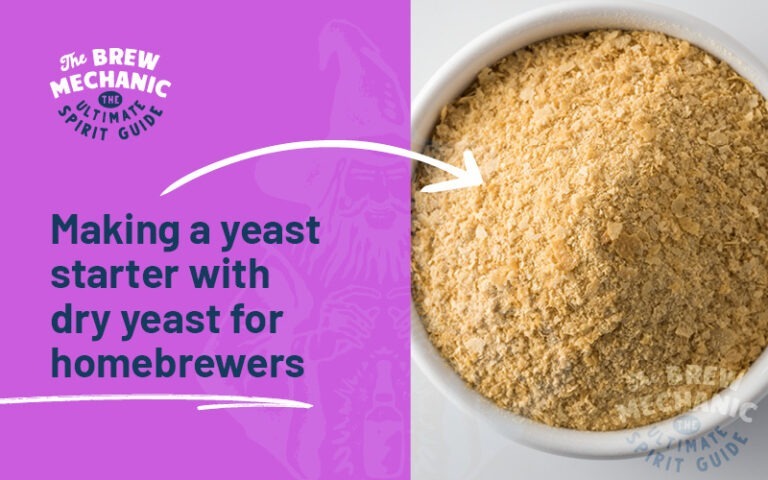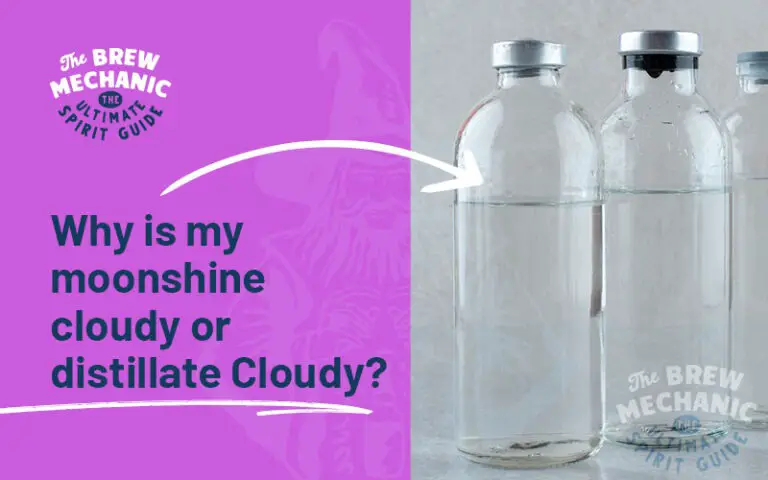How to clear sugar wash? Here’s how you do it.

Disclaimer: This post might include affiliate links, through which I may earn a small commission without any extra cost to you. Additionally, I am an Amazon Associate and earn from eligible purchases. All the products and services I suggest are ones I have personally used or would use. Thank you very much for your support if you decide to buy through any of my links!
Come join the Distilling Squad!
Get the best fundamental tips & tricks here. Woohoo!
In short, to clear sugar wash is called racking. It is where you syphon off the clear liquid that has been separated from a fermented wash by using a clearing agent or other means. The sludge (trub) is made up of settled sediment of dead yeast and other particles not reacted.
Do I need to clear sugar wash?
A wash solution that is being racked should be clear with no colloidal visible solids. Solids in solution tend to join and then “burn” causing unwanted flavours when coming into contact with the heating source in the kettle. In my case, I have 2 open elements in the solution.
Some people say you do not have to clear the wash. I do not want to take the chance of messing up a batch due to this. The clearing agent (Bentonite) is cheap enough to warrant the cost.
Different methods to rack
METHOD 1:
Racking a sugar wash without using flocculent. Time is the factor here. This way takes a lot longer (week and longer) and you must be careful when racking as the solid particles tend to move about more freely and can easily be sucked over when racking as they are not bound.
METHOD 2:
Cold crash using a fridge.
METHOD 3:
Racking a sugar wash using a clearing agent (flocculant). This way, you get a definite separation between the liquid and solids that have been separated from the clear solution. You can decant it safely after 24 hours.
METHOD 4:
At the end of the day, do what works for you.
Correct way to clear sugar wash from clearing agent to flocculent.
SIMPLE: Place the clear tube above the sediment level and only rack the clear liquid to the boiler.
Whether you decide to use a flocculent/clarifier/clearing agent or not is your choice, but in order for the solution to separate, it must be cooled down, and the PH should be below 4.5 for this to happen. A fridge or cold cement floor works. Racking is decided by you as soon as the clear “cut” is visible.
Degassing at the end of a sugar wash fermented batch.
You must first confirm that the sugar wash is fully fermented before going this route.
The best way to de-gas a fermented batch is with a hand drill, or paint mixer that can reversed. Basically, what you are doing is creating turbulence within the wash when mixing. This drives out the CO2 from suspension.
Some people do not de–gas at all. This is your choice; if it works for you that is great.
The gas that you want out is CO2. This step takes about 5 minutes, and the reason for removing this gas is to make sure that when boiling up in the kettle that you get no carryover with the C02 into the still. This carryover in the form of gas can start to plug up the still internals. This means shutting down and washing out of internals.
Why take the chance of the above happening?
What can stop foaming?
Any vegetable oil, “canola oil” or foaming agent bought from a Craft Shop is good and added at the start of fermentation. You will see how it has performed while degassing and adding of the clearing agent. All that you are doing is changing the surface tension of the liquid.
Like adding salt into a dishwasher to help the cleaning agent work better to make the glasses sparkle. You don’t have to do this.
Why degass before racking?
When the gas vapour passes through the reflux column, you want as few as possible other problems (fouling) that can occur during distillation boil-up. No foam, vapour as pure as possible before moving up the column.
You are doing a form of preventative maintenance on the vapour and column.
Why is my sugar wash solution not clear?
Different types of clearing agents
I have lots of experience in water treatment so opt for Bentonite which is cheap and works well.
Shop bought products from Alcotec, Still Spirits, Pure Distilling etc. such as Turbo Clear, Turbo Klar, and Crystal Clear, are a few to mention. The choice is yours.
The purpose of clarifying is to remove the dead yeast cells from suspension, solids and other compounds from the wash before racking.
Bentonite as a clarifier
Here, you must understand what Bentonite does as a clarifier.
Bentonite is a clearing agent; its function is to remove by binding the particles together (absorption), causing the particles to drop out of suspension and leaving a clear liquid for racking. Bentonite does not affect the end product at all.
The usage can vary from 1 g/l up to 1.3 g/l. The cleared liquid is slightly green, which is fine.
Bentonite should only be used on a sugar wash to make neutral alcohol spirit as it will strip off any flavor and aroma.
And that’s how to clear sugar wash for your home brew
Well, to clear sugar wash before distillation is a simple but important step to ensure a clean, high-quality final product.
Whether you choose to let time do the work, use a cold crash, or add a clearing agent like Bentonite, the key is to remove unwanted solids that can cause off-flavors or issues during distillation.
Ultimately, the method you choose depends on your preference, but a properly cleared wash will always yield better results.
Last Updated on Jan 25, 2025 by The Brew Mechanic
Disclosure: I may receive affiliate compensation for some of the links below at no cost to you if you decide to purchase a product or service. You can read our affiliate disclosure in our privacy policy. The information provided is for entertainment only.

With 35 years of knowledge of being a chemical engineer in alcohol manufacturing plants, my mission is to teach the next generation of home distilling alcohol brewers at a supernatural speed.
My reviews are based on real-life experiences with reflux stills, sugar wash, troubleshooting and mystical chemical reactions.







